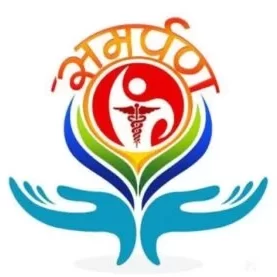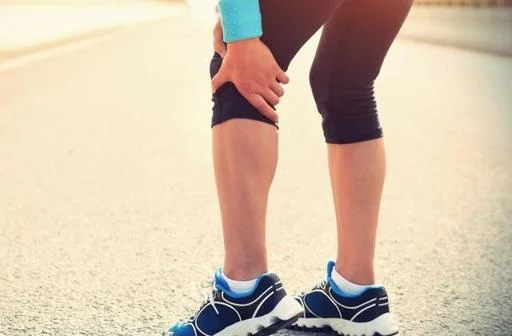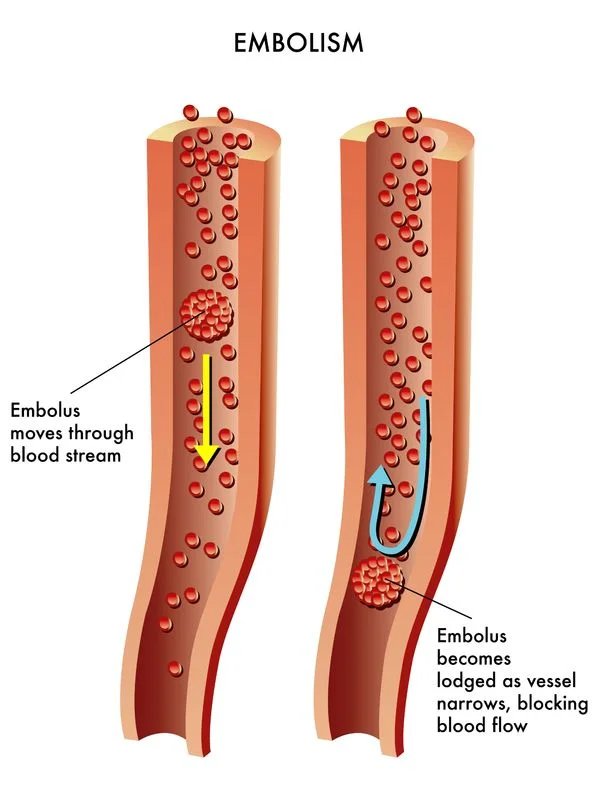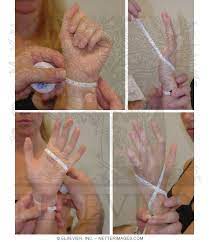How to Heal a Lumbar Herniated Disc Quickly?
Table of Contents
What is a herniated disk?
When one of the disks in your spine (backbone) ruptures or leaks as a result of normal wear and tear or trauma, you have a herniated disk. This causes pain, numbness, and weakness by irritating your spinal nerves and applying pressure on your spinal cord.
From the base of your head to your tailbone, your spine is made up of several bones called vertebrae. You have disks, which are circular cushions, between your vertebrae. You may bend and move freely because the disks serve as buffers between your bones. The disks lose their effectiveness and could move over time. This condition is known as a herniated disk.
Symptoms
“Sciatic nerve” (sciatica) pain is frequently caused by a herniated disk in the lower back. Usually radiating down one side of your buttocks, this acute pain travels down your leg and even to your foot.
- soreness in the lower back.
- Your legs or feet may feel tingly or numb.
- Weakening of the muscles.
Risk Factors
A herniated disk is most common in people between the ages of 30 and 50. Men are twice as likely as women to be affected by the issue. The illness also has a tendency to run in families. Additional risk factors consist of:
- Smoking.
- Sitting still for extended periods of time.
- Being obese or overweight.
- Having a disease of the connective tissue.
- Having diabetes.
Treatment for Lumbar Herniated Disc
Avoid prolonged bed rest in order to heal a lumbar herniated disc; instead, concentrate on brief rest intervals and mild movement to increase the range of motion. To control pain and inflammation, apply cold and heat therapy. If the pain is moderate, take NSAIDs.
A personalized program of mild stretching and strengthening exercises can be developed by a physical therapist. A physician may also recommend drugs or, in extreme circumstances when conservative measures are ineffective, surgery or epidural steroid injections.
Quick Pain Reduction
- Rest and Mild Motion: Avoid extended bed rest since this can exacerbate stiffness. Instead, take short walks to maintain your flexibility after finding a comfortable position for brief periods.
- Ice and Heat: Use cold packs to ease pain and swelling, and then use heat treatment to ease tight muscles and increase blood flow.
- Medication: For mild to moderate pain, over-the-counter medications such as the NSAID ibuprofen might be helpful.
Drugs for relieving pain
- Non-prescription medications for pain. Your healthcare provider may suggest over-the-counter pain medication if your discomfort is mild to severe. Among the alternatives are naproxen sodium (Aleve), ibuprofen (Advil, Motrin IB, and others), and acetaminophen (Tylenol, among others).
- neuropathic medications. These medications reduce pain by altering nerve signals. These consist of venlafaxine (Effexor XR), duloxetine (Cymbalta), pregabalin (Lyrica), and gabapentin (Horizant, Neurontin).
- Muscle relaxers. If you experience muscular spasms, you may be prescribed these. Dizziness and sedation are frequent adverse effects.
- Opioids. Many medical practitioners are concerned about prescribing opioids for a disk herniation because of its negative effects and risk for addiction. Your doctor may suggest short-term opioid use if other medications are unable to alleviate your discomfort. One can use codeine or Percocet, a mixture of oxycodone and acetaminophen. These medications may cause sedation, nausea, disorientation, and constipation.
- Shots of cortisone. Your doctor may suggest a corticosteroid injection if oral medications are ineffective for your discomfort. The region around the spinal nerves can get an injection of this medication. The needle can be guided with the use of spinal MRI.
Exercise for a Herniated Disc
Bridge

The gluteus maximus muscle, which supports your lower (lumbar) spine, is the focus of the bridge exercise, which is described below:
- With your feet on the ground and your knees bent, lie on your back.
- Lift your buttocks as high off the ground as you can without experiencing any pain by contracting your abdominal muscles.
- Before dropping to the floor, hold this stance for ten seconds.
- Aim for one or two sets of ten reps.
Bird Dog
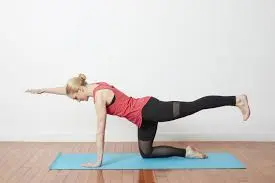
By testing your postural stability, this approach targets the muscles in your abdomen, glutes, and shoulder blades. Performing the bird dog:
- Lower yourself to your hands and knees.
- As you flatten your lower back, contract your abdominal muscles.
- Extend the opposing leg behind you and raise one arm in front of you.
- After five seconds of holding this posture, switch to the other arm and leg and repeat the exercise.
- For each side, do ten repetitions.
Side Plank
The gluteus medius muscle on the side of your hip and the oblique muscles in your stomach are the focus of this core exercise, which is described below:
- With your forearm under your shoulder and your knees straight, lie on your side on the floor.
- Without allowing your torso to loosen up, raise your hips and knees into the air.
- Before dropping to the floor, hold this stance for 15 to 30 seconds.
- On each side of your body, perform two to three side planks.
Cobra Pose
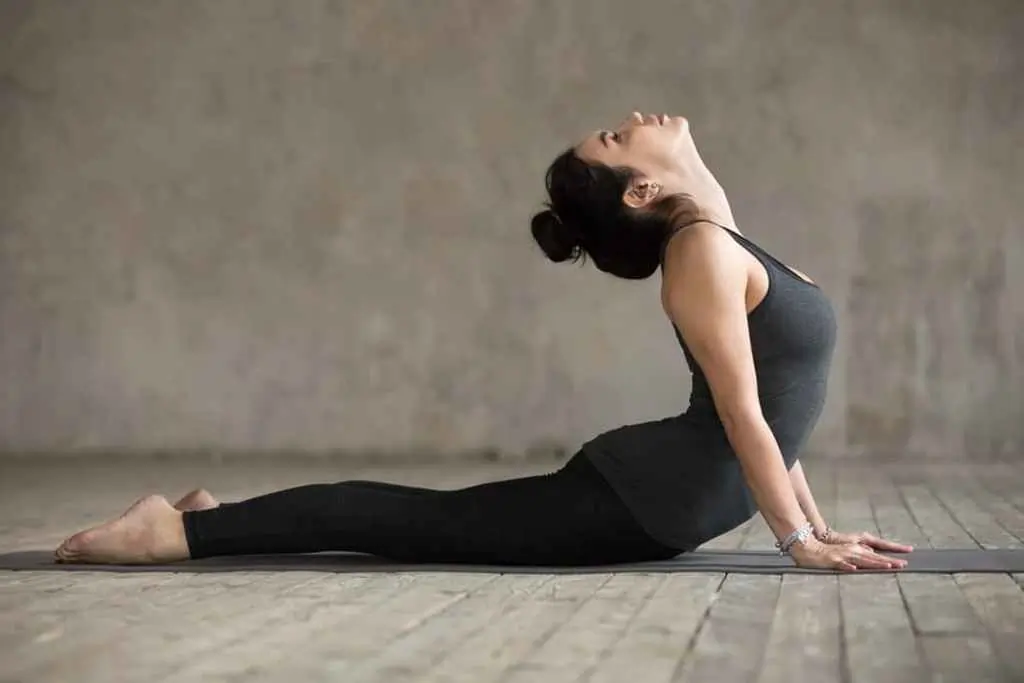
- Lying face down on a mat is the first step. With your fingertips slightly outside of your shoulders and aligned with the front of your shoulder bones, place your hands on the ground. Keep your elbows at your sides, parallel, and straight back.
- Squeeze your shoulder blades together as you take a breath, then raise your chest off the floor by pressing into the mat with your hands. As you engage through your core, extend your heart forward, allowing for a slight backbend.
- Glide your shoulders down until you feel grounded and stable, then draw them away from your ears.
- Press the tops of your feet into the ground while maintaining long, strong legs behind you.
- Hold for three to five calm, deep breaths.
- To slowly lower yourself and place your forehead and chest on the mat, exhale.
Dead Bug

The transverse abdominus muscle, located deep within your stomach, is the focus of this difficult workout, which is described here. Follow these steps:
- With your feet on the ground and your knees bent, lie on your back.
- Contract your abdominal muscles to flatten your lower back onto the floor.
- Lift both of your arms to the ceiling.
- Elevate one foot a few inches off the ground gradually. Move the arm on the same side a couple of inches over your head while you do this.
- Repeat the motion on the opposite side after lowering your arm and foot back to their starting positions.
- Keep moving slowly back and forth until you’ve done 15 reps for each arm and leg.
Cat Camel Stretch
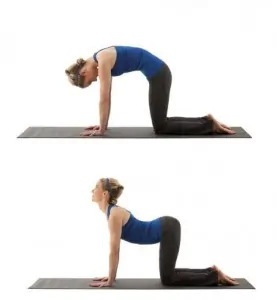
This stretch helps in recovering mobility in the middle and lower back.
- Place yourself on your hands and knees.
- Let your stomach and chest drop toward the floor to start.
- Reverse the motion and arch your back away from the floor after you have gone as far as you can without experiencing any kind of pain.
- For ten to fifteen repetitions, continue to switch between the two postures gently.
Prevention
Sometimes there is no way to stop a bulging disk. However, you can lower your risk by:
- Use safe lifting methods. Avoid stooping at the waist. Maintain a straight back while bending your knees. To assist in supporting the weight, use your powerful leg muscles.
- Keeping you at a healthy weight. Your lower back is strained when you carry too much weight.
- Maintaining proper posture. Learn how to stand, sit, walk, and sleep with better posture. Maintaining proper posture eases the pressure on your spine.
- Extending. Stretching breaks are especially crucial if you spend a lot of time sitting down.
- Avoid shoes with high heels. Your spine is thrown out of alignment when you wear these shoes.
- Quitting smoking. Disks can become weaker and more prone to rupture as a result of smoking. Think about giving up smoking.
How should one care for a Slipped Disc at home?
A mix of rest, physical therapy, lifestyle modifications, and occasionally medicinal therapies is used to manage a slipped disc. Although slipped disc surgery may be necessary in extreme situations, many people find relief with non-invasive therapies.
The main objectives are to lessen discomfort, increase the range of motion, and prevent further injuries. Effective treatment of a slipped disc depends on knowing how to treat it.
Getting Enough Sleep
- In the early stages of a slipped disc, rest is essential. Avoid back-stressing activities like hard lifting and extended sitting. To maintain the flexibility of your spine, instead, concentrate on brief rest intervals interspersed with mild motions.
- To relieve strain on your spine, lie on your side with a cushion between your knees or on your back with a pillow between your knees. Avoid extended bed rest, though, since this might exacerbate your disease and cause muscular stiffness. Balance is essential; to encourage healing, take breaks when necessary, but continue to move gently.
Nutrition-Based Dietary Control
- An important factor in recovering from a slipped disc is eating a balanced diet. Foods high in nutrients can promote general health and aid in reducing inflammation. Eat a diet rich in whole grains, lean meats, fruits, and vegetables.
- Omega-3 fatty acid-rich foods, such as walnuts, flaxseeds, and salmon, can help lower inflammation. Make sure you’re eating dairy products, leafy greens, and fortified meals since calcium and vitamin D are crucial for healthy bones. Maintaining spinal health also requires drinking enough water.
Heat and Cold Therapy
- Slipped disc pain can be alleviated by switching between cold and heat treatment. Heat therapy increases blood flow and eases tense muscles, while cold therapy helps reduce inflammation and dull sharp pain.
- During the early stages of an injury, apply a cold pack or a towel-wrapped bag of ice to the injured region for 15 to 20 minutes multiple times a day. Use a heated towel or heating pad for heat treatment after a few days. To reduce stiffness and encourage healing, apply heat for fifteen to twenty minutes. This technique works well for treating slipped disks at home.
Decreased Stress
- Stress might make a slipped disc’s symptoms worse. Using stress-reduction strategies might help you feel better overall and have less discomfort.
- Think about practices like mindfulness, meditation, and deep breathing. Using these methods regularly will help you relax your muscles and quiet your thoughts, which will help you recover more quickly and experience less pain. Make sure you get enough sleep, as it’s essential for recovery.
Conclusion
A mix of rest, healthy eating, cold and heat treatment, mild exercise, stress management, and ergonomic modifications is necessary for at-home management of a slipped disc. Even though these suggestions might lessen symptoms and encourage recovery, it’s crucial to speak with a healthcare provider for specific advice and care.
You may effectively address slipped disc issues and enhance your quality of life by being proactive and following a thorough strategy. By incorporating these techniques into your daily routine, you may effectively cure slipped discs, improving the health of your spine and reducing discomfort.
FAQs
How is a lumbar disc herniation treated?
Initially, conservative treatments such as over-the-counter painkillers, at-home exercises, heat, ice, and activity as tolerated are used to treat patients with cervical and lumbar spine herniations. The severity of the disk herniation and the mechanism of injury determine how long it takes to heal.
What is the severity of a lumbar disc herniation?
The whole spinal canal, including all of the cauda equina’s nerves, may occasionally be compressed by a disk herniation. Rarely, surgery may be required to prevent irreversible paralysis or weakening. Seek immediate medical assistance if your symptoms worsen.
How can I treat a herniated disc right away?
In addition to taking the painkillers prescribed by your physician, consider:
using either cold or heat. Initially, pain and swelling can be reduced using cold packs.
staying out of bed too much. Your recovery may be delayed by weak muscles and tight joints caused by staying in bed.
slowly getting back to work.
Why does a nighttime herniated disc hurt more?
Lying incorrectly increases pressure on the disc and nerves, exacerbating discomfort and delaying healing. Finding the ideal sleeping posture is crucial because of this.
How can a herniated disc be verified by a doctor?
To examine the vertebrae around a herniated disc, your doctor could suggest an X-ray. High-energy light beams are used in X-rays to provide finely detailed pictures of the spine. Without the disc to provide as a cushion, the gap between vertebrae may often narrow or the vertebrae may become unstable if a disk falls out of position.
Refrence
- Herniated disk – Diagnosis and treatment – Mayo Clinic. (n.d.). https://www.mayoclinic.org/diseases-conditions/herniated-disk/diagnosis-treatment/drc-20354101
- Herniated disk (Slipped or bulging disk). (2025, September 4). Cleveland Clinic. https://my.clevelandclinic.org/health/diseases/12768-herniated-disk
- Ocs, T. P. D. (2025, September 7). 16 Exercises for herniated disc (Back or neck) pain. Verywell Health. https://www.verywellhealth.com/exercises-for-herniated-disc-7642792
